What's New
Displaying results 2181 - 2190 of 4052
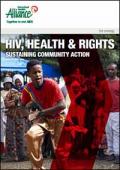
Resource | Publications,
This strategy update responds to a number of critical external factors, in particular the evolution of the HIV epidemic and the momentum behind treatment scale-up, new global targets for HIV treatment, prevention and non-discrimination, the continued withdrawal of development financing from middle income countries, uneven - and in many countries shrinking - policy and fiscal space for civil society, human rights challenges, increased efforts focusing on sexual and reproductive health and rights (SRHR), the new Sustainable Development Goals (SDGs), and the ambition to achieve inclusive development and equity. This update focuses on where we need to evolve to address these developments. It is not an entirely new strategy, so our four result areas and four responses are retained. Within our updated strategic results framework we present a new, unifying measure for monitoring and reporting public health impact.
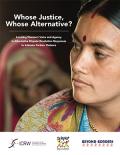
Resource | Publications,
Intimate partner violence against women is a complex, enormously prevalent crime with devastating effects on women’s safety, health, and well being. With one out of three women worldwide experiencing this violence, its magnitude presents complex challenges to justice systems when survivors of violence seek to formally prosecute perpetrators. Further exacerbating this challenge are the varying individual, family, and community ideas about whether and how such violence – considered a private family matter in many cultural and social contexts – should be made public at all, let alone prosecuted.
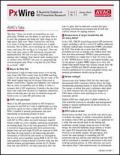
Resource | Publications,
In late 2015, UNAIDS issued long-awaited HIV prevention targets, including a call for a total of 27 million additional voluntary medical male circumcision (VMMC) procedures by 2020. This works out to more than five million procedures per year on average—two million more than have ever been performed. PEPFAR’s peak performance was 2.8 million in a single year. It won’t be close to that in 2017. PEPFAR doesn’t need to, and indeed shouldn’t, pay for the pursuit of global VMMC targets on its own. The Global Fund should ensure that country concept notes fill the space; PEPFAR and UNAIDS should advocate for resource-mobilization in country and global forums; and national governments should step up the pace.
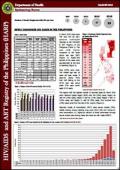
Resource | Fact Sheets,
In March 2016, there were 736 new HIV Ab seropositive individuals reported to the HIV/AIDS & ART Registry of the Philippines. This was 10% higher compared to the same period last year (667). Eighty-nine percent of the cases were asymptomatic at the time of reporting.
Most (97%) were male. The median age was 28 years old (age range: 8 years-63 years). More than half belong to the 25-34 year age group while 27% were youth aged 15-24 years.
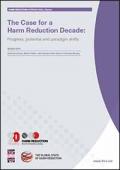
Resource | Publications,
HIV-related deaths and new HIV infections among people who inject drugs could be almost entirely eliminated by 2030 with just a tiny shift in global drug control spending. This is one finding of our report The Case for a Harm Reduction Decade.
The study uses data we have collected over the last 10 years for our biennial Global State of Harm Reduction reports to assess progress and reflect on challenges faced around the world. Using mathematical modelling, it then outlines the potential impact of increased investment in harm reduction on avoidable health-related harms associated with injecting drug use over the next decade and beyond.
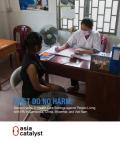
Resource | Publications,
Discrimination in health care settings is one of the foremost barriers preventing people living with HIV and key populations from accessing critical health services. For people living with HIV, disclosure can mean they are denied surgery or treatment. This report summarizes documented experiences of discrimination against people living with HIV in health care settings, and discusses the devastating consequences for those patients in the region who are turned away by health care practitioners because of their status.
Based on 202 interviews conducted by 8 community based organizations in Cambodia, China, Myanmar and Viet Nam, this report documents discriminatory practices against people living with HIV, including involuntary testing, disclosure, segregation, and arbitrary additional expenses for patients due to their HIV status. For women living with HIV, discrimination also extends to sexual and reproductive health services, including advice against pregnancy and, in some cases, sterilization on the advice of doctors due to their HIV status.
This report also documents health care done right. Examples where affected communities, health care providers and governments work together to increase awareness of HIV prevention, illustrate best practices to reduce discrimination and ensure the right to health for all.
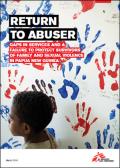
Resource | Publications,
A report from Médecins Sans Frontières (MSF) uncovers the gaps in services and systems in Papua New Guinea, trapping women and children in cycles of severe family and sexual violence. “Return to Abuser” details how a dire lack of protection mechanisms, a weak justice system and a culture of impunity endanger the health and lives of patients even if they manage to reach medical care.
The report includes comprehensive data from more than 3,000 survivors of family and sexual violence that MSF treated in 2014-15 in its two projects in both rural Tari, in Hela Province, and the capital, Port Moresby. It reveals the repeated, often escalating, violence women and children endure in the places they should be safe, their homes and communities.

Resource | Publications,
Under the leadership of the Government of Bangladesh (GOB), the National AIDS/STD Programme (NASP) and UNAIDS in liaison with civil society stakeholders started the process of the Investment Case for Bangladesh to enhance the mobilization of resources (domestic and external donor) to end AIDS BY 2030 through Fast-Track strategies. The Investment Case makes an effort to outline how to maximize efficient use of resources, based on current evidence, by re-visiting the strategic directions in prevention efforts to fast track and intensify. The process included several review sessions facilitated by the Ministry of Health and Family Welfare, engaging researchers, civil society and government.
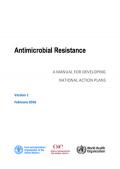
Resource | Tools,
This manual for developing national action plans to address antimicrobial resistance has been developed at the request of the World Health Assembly to assist countries in the initial phase of developing new, or refining existing national action plans in line with the strategic objectives of the Global Action Plan. It proposes an incremental approach that countries can adapt to the specific needs, circumstances and available resources of each individual country. Details of actions to be taken will vary according to national contexts.
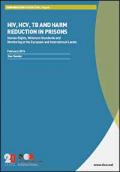
Resource | Publications,
The report recognises that the right to health and freedom from ill treatment are inseparable, which places human rights-based prison monitors, particularly those with a preventative mandate, in a unique and critical position to consider these issues. It notes, however, that this is not yet occurring in an adequately systematic or comprehensive manner, and provides specific recommendations to the European Committee for the Prevention of Torture and Inhuman or Degrading Treatment or Punishment (CPT) and the United Nations Subcommittee on the Prevention of Torture and other Cruel, Inhuman or Degrading Treatment or Punishment (SPT).
Alongside the report, HRI has published a monitoring tool to assist human rights-based prison monitoring mechanisms and other prison monitors to generate better informed, more consistent and sustained monitoring of issues relating to HIV, HCV, TB and harm reduction in prisons, and ultimately to help prevent situations and conditions that can lead to ill treatment in this context from occurring in the first place.





